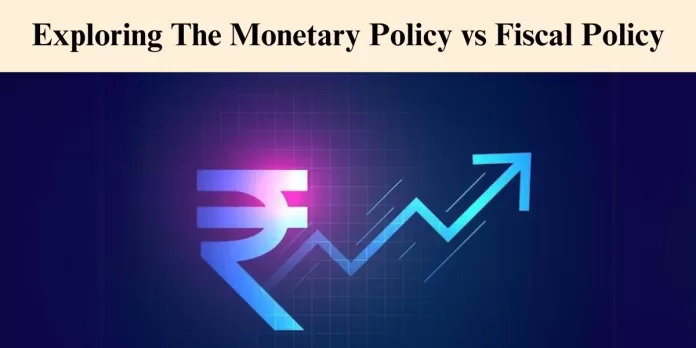In the world of economic management, monetary and fiscal policies emerge as crucial tools, each wielding distinct influences on a country’s economic activity. Let’s navigate through the financial landscape, exploring the differences between these policies and their real-world implications, with a special focus on India.
Monetary Policy: Steering the Financial Currents
Monetary policy, crafted and executed by a country’s central bank, is a financial manoeuvre aimed at regulating the flow of money and interest rates within an economy.
- Key Measures: Central banks implement monetary policies through tools like open market operations, reserve requirements, and discount rate. For instance, the Reserve Bank of India (RBI) uses these levers to influence interest rates, affecting borrowing costs and spending behavior.
- Focus Area and Impact: The primary focus of monetary policy is to maintain economic stability. By adjusting interest rates, central banks stimulate or slow down economic activity. In India, during economic slowdowns, the RBI might adopt an expansionary stance, lowering interest rates to encourage borrowing and spending.
- Targets and Impact on Exchange Rates: Monetary policy often targets inflation. For instance, if inflation is rising, a central bank may opt for a contractionary policy, raising interest rates to cool down spending. However, in the context of exchange rates, higher interest rates can attract foreign capital, strengthening the domestic currency.
Read: All You Need to Know about Inflation
Fiscal Policy: Nurturing Economic Growth
Managed by the Ministry of Finance, fiscal policy revolves around government decisions on taxation and spending to stabilize and foster economic growth.
- Key Measures: Governments mold fiscal policy by adjusting tax rates and managing expenditures. For example, India might implement expansionary fiscal measures by increasing spending on infrastructure projects to spur economic activity during a recession.
- Focus Area and Impact on Budget Deficit: Fiscal policy primarily aims at promoting economic growth. Through strategic spending and taxation adjustments, governments can influence aggregate demand. However, these actions can also impact the budget deficit, especially during expansionary phases.
- Targets and Impact on Consumers: While fiscal policy doesn’t have a specific inflation target, it significantly influences consumers. For instance, tax cuts can lead to increased disposable income, boosting spending and demand in the economy.
Here’s a table summarizing the key differences between monetary and fiscal policy:
| Feature | Monetary Policy | Fiscal Policy |
| Implemented by | Reserve Bank of India (RBI) | Government of India |
| Tools | Interest rates, open market operations, reserve requirements | Government spending, taxation |
| Focus | Quantity of money, interest rates | Government spending, tax revenues |
| Impact | Inflation, borrowing, exchange rates | Economic growth, budget deficit, income distribution |
Contrasting Indian Policies: A Real-World Perspective
Real-world examples of Indian policies and their effects:
- The RBI, in response to economic slowdowns, has often opted for expansionary measures. For instance, in 2020, during the COVID-19 pandemic, the RBI reduced interest rates and infused liquidity into the system to encourage borrowing and spending.
- On the fiscal front, the Indian government has introduced stimulus packages to counteract economic contractions. These include increased spending on infrastructure and welfare programs. However, such measures have also contributed to a widening fiscal deficit.
- 2008 Global Financial Crisis: The RBI responded with a series of interest rate cuts and increased liquidity to stimulate the economy. The government also implemented a fiscal stimulus package, which included increased spending on infrastructure projects. These measures helped India weather the crisis better than many other countries.
- 2020 COVID-19 Pandemic: Both the RBI and the government implemented various measures to support the economy during the pandemic. The RBI cut interest rates to record lows and provided liquidity support to businesses. The government also announced a fiscal stimulus package, which included cash transfers to low-income households and increased spending on healthcare. These measures helped to mitigate the economic impact of the pandemic.
Also Read: The Black Swan Events in Financial Markets
Challenges and Coordination
While both monetary and fiscal policies aim for economic stability, they operate through different channels and can sometimes work against each other. Coordination between the central bank and the government becomes paramount to ensure a harmonious and effective approach.
Understanding these examples highlights the importance of choosing the right policy mix for the prevailing economic conditions. By using monetary and fiscal policy effectively, the government and the RBI can work together to steer the Indian economy towards a brighter future.


